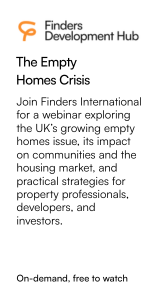Is your Right-to-Buy lease fire-safe?
- Details
New legislation implementing Grenfell Inquiry recommendations means that local authority conveyancers need to look again at the terms of their standard right-to-buy lease, writes V. Charles Ward.
For many local authorities, the terms of that standard 125 year right-to-buy lease may have barely changed since the inception of right-to-buy as the beginning of the 1980s. Such inertia might be driven, in part, by the need for transactional-consistency across local authority housing estates. The core terms of that template right-to-buy lease are currently set out in Schedule 6 of the Housing Act 1985, which replaced earlier right to buy legislation. Later tweaks include the recent reduction of an already nominal £10 per year ground-rent to zero, in consequence of the Leasehold Reform (Ground Rent) Act 2022. But what about the more fundamental changes required to meet modern fire legislation?
The three key pieces of legislation which have so far flowed out of the Grenfell inquiry are the Fire-Safety Act 2021; the Building Safety Act 2022; and the Fire-Safety (England) Regulations 2022, the last of which takes effect 23 January 2023. It is still a work-in-progress, with more fire-safety legislation expected to come-on-stream in the coming years and months.
For now, it is the Fire-Safety act 2021 which brought the structure and exterior of a block of flats, as well as external attachments such as balconies, into the scope of the Fire-Safety Order to 2005. Formerly, the 2005 Order only applied to the internal common-parts of a multi-occupied residential building. More far-reaching is the Building Safety Act 2022, which implies a new ‘landlord’s warranty’ in residential leases to address fire-safety issues, with a reciprocal obligation on leaseholders to allow a landlord access to their flats to enable the landlord to comply with those fire-safety obligations. A primary object of the Building Safety Act 2022 is to push back financial liability for defective cladding on to the party originally responsible for that problem instead of onto leasehold service charges. But it is the Fire Safety (England) Regulations 2022 which have immediate practical importance for local authority ground-landlords.
In summary, the 2022 Regulations impose new duties on residential ground-landlords relating to the operational condition of evacuation lifts; of internal fire-doors and other key fire-safety equipment; as well as ensuring the immediate availability of fire safety information to local fire and rescue services, when called upon to deal with an emergency. The Regulations define a high-rise building as having a height of at least 18 metres or seven storeys.
Regulation 4 requires installation of a secure information box containing everything which firefighters need to know to tackle an emergency. Regulation 5 requires building-managers to record the design of external materials and the materials used in their design as well as identified fire-risk. Regulation 6 requires preparation of a plan of each floor showing the location of all lifts, including those for use by firefighters and evacuation. Regulation 7 requires monthly checks of lifts used for evacuation, as well as essential fire-fighting equipment. The local fire and rescue authority must be notified where any fault cannot be rectified within 24 hours. Regulation 8 requires the installation of a ‘wayfinder’ signage, which is clearly marked as regards floor identification and the location of individual flats. Regulation 9 deals with the fire-safety information which building-managers must give to residents. This information must be provided to every new resident and, by 27 January, 2024, to existing residents. Regulation 10 deals with internal fire-doors, including those at the front of each flat, leading out on to landings. Regulation 10 requires building-managers to check each fire-door at least annually to ensure that self-closing mechanisms are in an operational condition. However, this can only be expressed as a ‘best endeavours’ obligation, as some landlords may have difficulty in obtaining access to individual flats to carry out those inspections. Other fire doors situated within the common-parts must be inspected at least quarterly. Residents must also be warned that the self-closing mechanisms on fire doors must not be tampered with. Regulation 11 requires building-managers to provide fire and rescue authorities with records of design and materials used in external walls as well as floor plans.
Note also Section 113 of the Building Safety Act 2022, which inserts a new section 47 into the Landlord and Tenant Act 1987, requiring certain building safety information to be included in rent demands.
So what does all this mean for the drafting of a residential lease?
It means firstly that councils must reserve the rights they need to carry out their new fire safety responsibilities. This is particularly important as regards the fire-doors at front of each flat, which might otherwise be regarded as part of ‘the demise’ and therefore outside the landlord’s direct control. Other key fire-safety equipment, such as sprinklers, situated within individual flats, may also require periodic inspection.
Existing service charge provisions should be reviewed to ensure that they allow ground-landlords recover financial outlay in making a building fire-safe, “to the extent that the law allows”. The inclusion of the last qualifier is important because under Schedule 8 of the Building Safety Act 2022, there may be some remediation costs which the ground-landlord cannot legally recover.
It is also important that the lease allows ground landlords to make new fire-safety regulations from time-to-time to meet changing circumstances. Although the Building Safety Act 2022 will imply reciprocal covenants between landlord and tenant relating to fire safety, is always better that such provisions are set out expressly in a lease.
Even where existing right-to-buy leases do not adequately address modern fire safety concerns, the right of individual leaseholders to seek lease-extensions under the Leasehold Reform Housing and Urban Development Act 1993 may provide a second opportunity for ground-landlords to bring their leases up to date in terms of fire safety.
V. Charles Ward is a senior property lawyer with HB Public Law. He is also the author or Fire-Safety Law: a Practical Guide for Leaseholders, Building-Owners and Conveyancers, which is published through Taylor and Francis. It is available for pre-order purchase. Type in Code FLA22 for 20% discount.

























